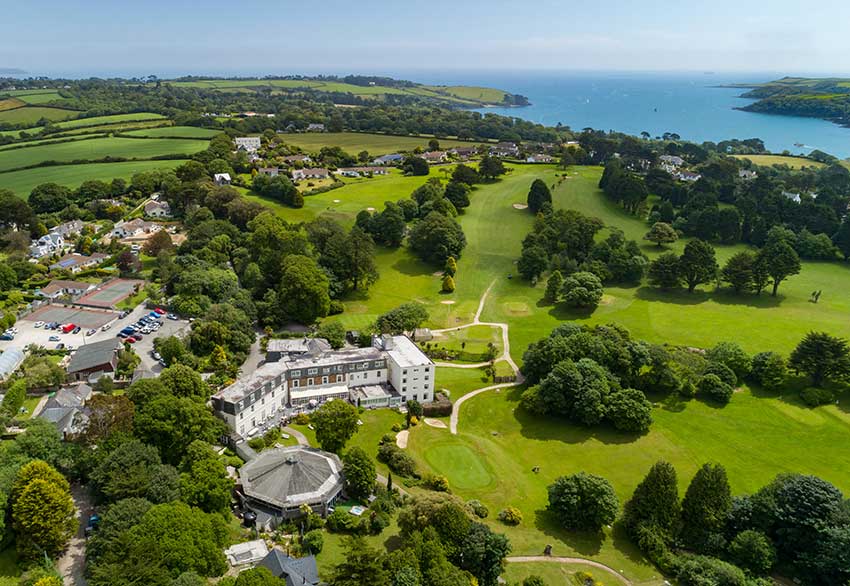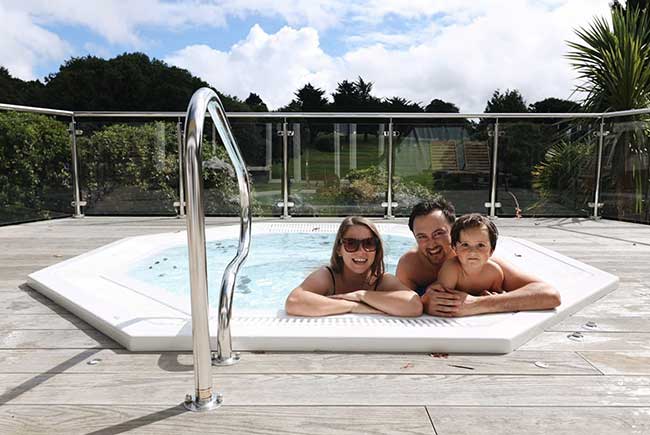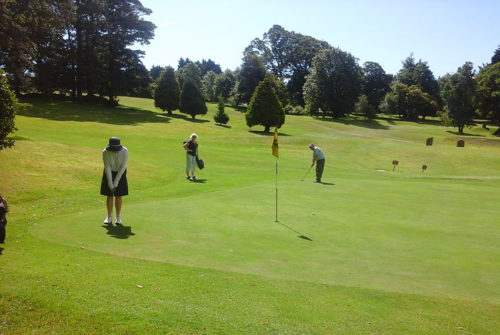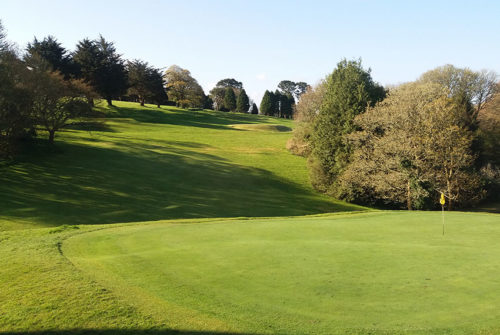News from Budock Vean
The Magical Woodlands of the Helford River
The Budock Vean Hotel is blessed to have the Helford River, one of the most precious, untouched and environmentally important treasures of the Cornish countryside, right on our doorstep. And as our guests can explore the hidden corners of this magical river and its woodlands for themselves on foot, by boat, kayak or stand-up paddle board we thought we would take a closer look at what makes the Helford so special!
The Helford River is the most southerly river in the UK and is actually a large tidal estuary, roughly 5.5 miles long. It is fed by about 30 little streams each of which flows into one of the river’s seven creeks – Ponsontuel Creek, Port Navas Creek, Gillan Creek, Frenchman’s Creek, Polwheveral Creek, Mawgan Creek and Polpenwith Creek. Though hard to imagine now these creeks, and the Helford as a whole, are actually a series of branching drowned valleys that were submerged at the end of the last Ice Age as water levels rose.
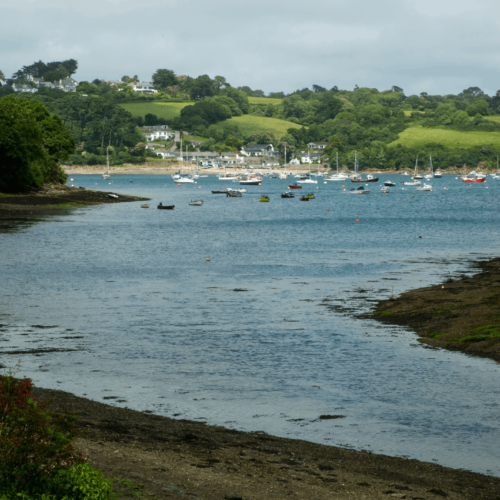
At low tide the muddy foreshore becomes the territory of an array of seabirds and waders, while beneath the water the river boasts some of the richest marine life found anywhere on the British coast, thick beds of eelgrass wave in the ebb and flow of the currents, and oysters and mussels, once harvested by Roman soldiers, cling to the rocks and glisten in the shallows. The beaches are dotted with many-coloured periwinkle shells and here and there the water-smoothed trunks of fallen trees make bridges between land and sea.
At high tide the Helford takes on a different face. The shoreline of the river meanders for some 27 miles, and for much of that length ancient oaks reach down to touch the water. Seaweed often catches in the boughs of these old trees and it is this strange sight that perfectly illustrates what makes the Helford so special ecologically and culturally. It is one of the only places in Britain where ancient oak woodland meets the sea.
From the water it is possible to see the gnarled old trees leaning far out over the tidal flow. Their roots kept safe from the poisonous saltwater by clinging precariously to the low cliffs out of reach of the tide, while their branches stretch out, defying gravity, to catch the sun. It is not unusual to see trees growing practically upside-down, their roots higher than their tops, while species of plant usually found on cliffs or seawater marshes grow at the base of their trunks.
Ancient woodland is defined as an area of trees that is known to have been in existence since at least 1600, but many date back to the Middle Ages and beyond in to the mists of time. Large areas of forest are relatively rare in Cornwall, making those we do have even more valuable. It is often said that the woods of the Duchy were “cut down for fuel to smelt the tin” and used as props to support the vast network of tunnels that the mines required. This is only partly true, in the past woods such as those that surround the Helford River have been cut down or coppiced many times over for many reasons but with good management they would still have remain undiminished for generations.
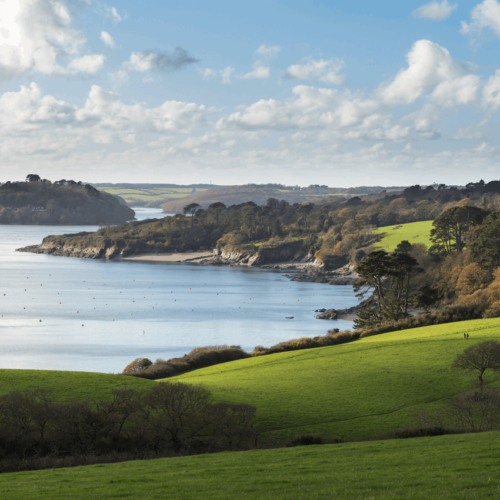
The now largely un-touched woodlands around the Helford cover some 600 acres (240 hectares) and consist of mostly sessile oak trees, though you will also spot beech, ash, sycamore, hazel, elm and holly. The woods contain a rich variety of flora and fauna, abundant native wild flowers, especially bluebells in the springtime, as well as lichen and mosses alongside some varieties, such as the Service tree and Solomon’s Seal plant, found nowhere else in Cornwall. And although the tree cover along the fringes of the river is pretty much continuous different patches of woodland have been given their own individual names over the passing centuries and these all have their own meaning and a wonderful lyrical quality – Arundell, Bonallack, Bosahan, Calamansack, Merthen, Trelowarren, Tremayne.
It is possible to walk through some of the woodlands that skirt the river, though much of it is either inaccessible or privately owned, so perhaps the best way to explore and discover the Helford’s secrets is from the water.
The Helford has long been a muse for artists and writers and given its extraordinary beauty and fascinating history it is not hard to see why. In 1932 Daphne du Maurier spent a night anchored in Frenchmen’s Creek on her yacht and the experience inspired her to write her swashbuckling novel about pirates, perhaps unaware that these waters were in fact the real life haunt of the Carter brothers, the notorious pirates from Prussia Cove.
The quiet, isolation of the Helford’s twisting creeks made an ideal haven for the clandestine activities of smugglers but also hid the headquarters of Winston Churchill’s Special Operations Executive during World War II. The SOE organised secret missions carrying spies, coded messages and equipment from the Helford for the coast of France during the war and the boats, disguised as Breton fishing boats, returned with rescued downed allied airmen and intelligence gathered by the Resistance.
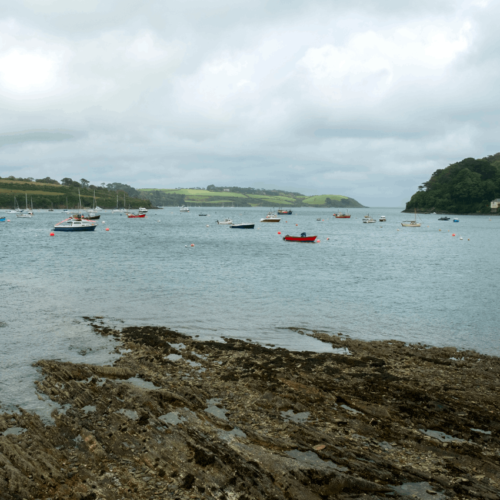
Hidden in the trees of Merthen Wood, which means ‘sea fort’ in Cornish, is the remains of an ancient earthworks believed by some to be Prehistoric while others are convinced that the enclosures are a pair of forgotten Roman forts. This same area of woodland, legend has it, was also used to bury plague victims in a mass grave in the 14th century. While just across the water in the woods at Trelowarren you can find the Halliggye fogou, a 4000 year old stone-lined underground passage, built during the Bronze Age for reasons that no one today can quite fathom.
If you decide to step ashore one of the few places you can do so, beyond the settlements at the Helford Passage, is at Tremayne Quay, which makes a magnificent spot for a picnic. This elegant and rather grand granite structure was actually built by local landowner, Sir Richard Vyvyan, for a visit from Queen Victoria in 1847. The queen never came but it did get Royal approval in 1921 when it was used by Prince Edward, the future King Edward VIII.
So you see, with such a fascinating wealth of heritage and cultural history hiding amongst the undergrowth, as well as so much untouched natural beauty to enjoy, paddling to the far reaches of one of the isolated creeks on the Helford is an experience like no other in Cornwall.
The landscape here has a truly timeless quality, nature is still very much in control and in some places where the woodland is deep on both sides of the water, away from the sights and sounds of modern life, it is possible to imagine Mesolithic man paddling by, Roman legionnaires fishing, pirates in their galleons or smugglers going about their secret business.
This truly is a wonderful place to relax and let your mind (and body) drift and just drink in the magic!

